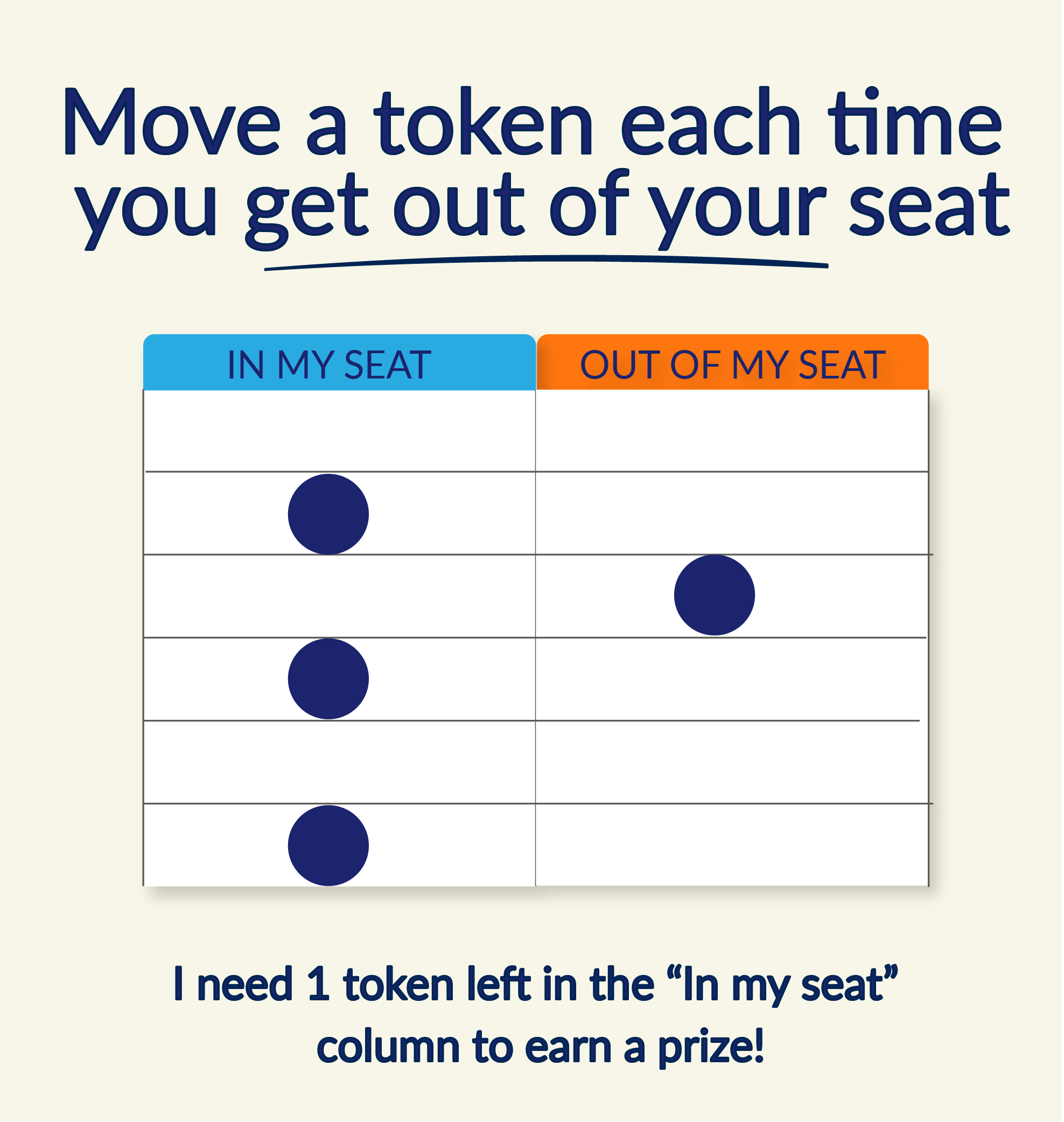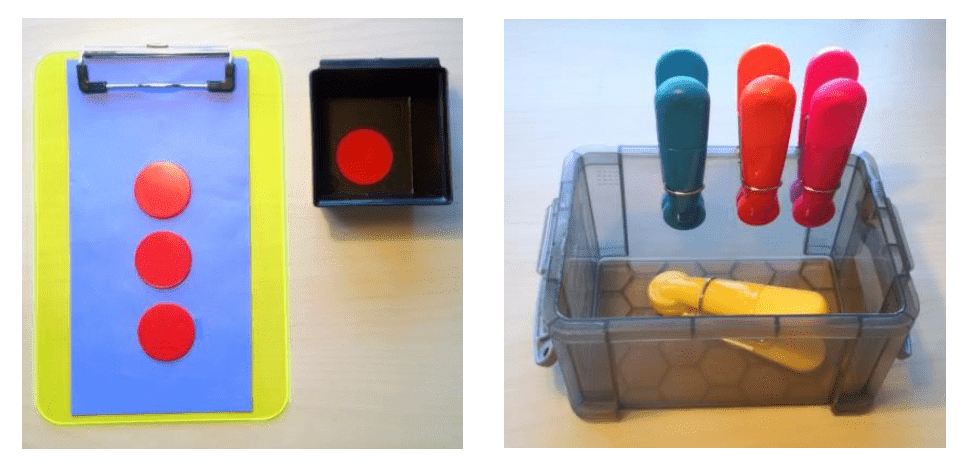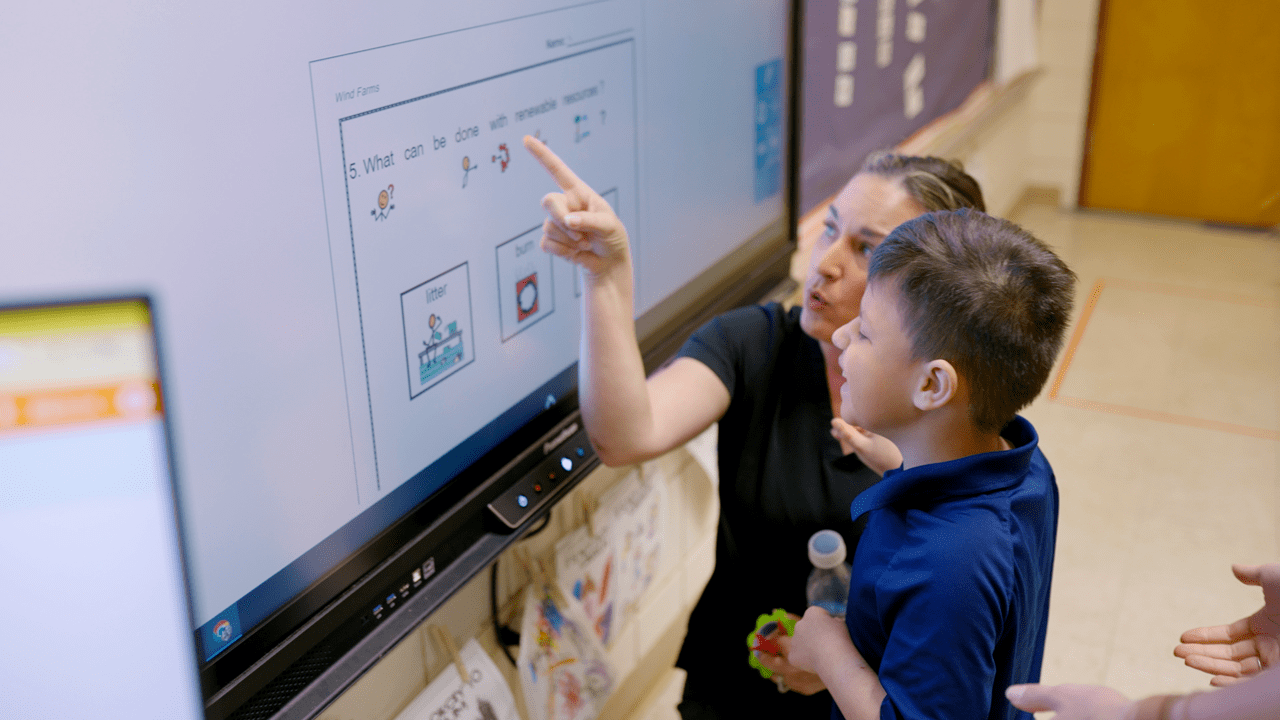As one of the five social-emotional learning (SEL) competencies identified by CASEL, self-management is an effective strategy for students in pre-K through high school and can be used to target a wide variety of skills and behaviors. Students can gain skills in communication, socializing and play, transitioning, and vocational applications. Self-management can also be used to increase desired behaviors such as engagement, staying on task, and self-regulation, as well as to decrease disruptive behaviors. And best of all, SM is effective when used across different settings, including at school, at home, and in the community. For that reason, it is an ideal strategy to use with students learning from home. The first step in this process is for the teachers to determine a target behavior or skill to use with teaching self-management in either a classroom or online setting.
Identifying a target behavior and setting a goal
As with any teaching goal, the first step for implementing SM is to identify a clear target behavior or skill. Keep in mind that it must be observable, measurable, and able to be described in concrete terms. An example of a clear target skill is “Sam will raise his hand and wait to be called on before speaking in class.” A less concrete skill is that “Sam will follow rules for speaking up in class.”
Once a target skill has been defined, take the time to gather some baseline data. Spend a day (or a class or lunch period) observing your student’s current level of skill or frequency of behavior. By knowing their current level of performance, you can set a realistic target for success.
Establishing a clear, measurable goal is the final step in determining what to teach with self-management. Once you know where your student currently stands by looking at baseline data, you can set a goal that is measurable and attainable. Again, use concrete language with clear metrics when you set your criteria for success. For example: “Using self-management strategies, Sam will independently raise his hand to speak in class 3 of 5 days in a week for 4 consecutive weeks.”
Once you have successfully designed a clear and measurable goal, instruction in self-management can begin. The three components of self-management require learners to (1) be able to perform the targeted skill independently and know the difference between the appropriate and inappropriate behavior, (2) self-monitor their behavior, and (3) reward themselves. In order for students to independently manage their own behavior, each of these three steps needs to be taught and monitored.
Teaching to mastery of targeted skill
Students using self-management must first be able to independently perform the target skill. For example, when teaching a student how to greet peers, they must have the language (or ability to wave or shake hands) and the capacity to initiate a greeting. If not, use prompting and reinforcing to increase their independence in the target skill.
Once the student has a clear understanding of the target skill and is able to perform it independently, the next step is to teach them to recognize the opposite or inappropriate behavior. They must know what it looks like to not greet a peer, or what an inappropriate greeting is.
With a clear understanding of both the expected and undesirable behaviors, the student must next learn to discriminate between the two. Use role-playing, videos, pictures, or words to represent the two behaviors, and ask them to identify appropriate or inappropriate skills. Use language that is clear, concrete, and tailored to their level of understanding.
Self-monitoring
The second step in self-management is to teach the student how to record their own behaviors. Depending on the type of skill or behavior, you will want to use one of two types of data collection.
Interval data
When increasing or decreasing the time spent on a behavior (like time engaged in work, time spent in conversation with a peer), use interval data.
During a class period teach the student to take data at set intervals (say, every two minutes) and to record whether or not they are engaging in the target behavior. Use your baseline data to determine appropriate intervals for monitoring.

Frequency data
When a student is working to increase or decrease the number of times a behavior takes place, use frequency data. In a given time frame, they document every time a behavior occurs. For example, if the student is learning to decrease the number of times they leave their seat during class, teach them to record every time they get up during a class period.

Choose a system for self-monitoring based on your student’s strengths and preferences. Concrete learners may do best with using objects. In the example above, if the student leaves their seat, they may move their token on the chart, deposit a token into a cup, or move a clothespin from one card to another. Others may prefer to check boxes for each behavior or circle an icon. Token boards are effective for many who are motivated by receiving a mini-reward like a star or sticker. Students who enjoy technology can keep track of behaviors using a variety of apps on a phone, tablet, or laptop, when available.

A cueing device, which is a visual or auditory cue that signals when or how often to monitor and record behavior, may be a helpful reminder for some students that it’s time to self-monitor. This device can be especially important for interval monitoring, when the student must record data on a schedule. The timer could be digital, bubble, or sand, or it could involve a tablet, some other screen, or stopwatch. Students could also use a vibrate setting on a smart watch to cue them to monitor their behavior. Some may initially require an adult to provide a simple cue such as a tap on the shoulder, but this type of prompt can be paired with or faded into another type of timing cue.
Rewards
The third and final component of self-management involves teaching students to reinforce their own behavior. By setting a target for frequency or duration of the behavior, teach them the expectation and desired timing for earning a reinforcer. By checking the data that they have taken on their own behavior, they should be able to determine whether they have earned the reward.
Be sure to have available a variety of reinforcers to prevent satiation. Reinforcers should be meaningful and motivating to the student, and, when possible, related to the skills. For example, a natural reinforcer for engaging in work is to earn a break. When selecting reinforcers, ask for student input or observe their natural tendencies and preferences.
Monitoring progress
Although a student may develop independence skills through self-management, it is still important that their monitoring and skill development are checked from time to time. Teachers or parents must evaluate whether the student is accurately monitoring their behavior (i.e., discriminating appropriate from inappropriate behavior) and accurately documenting it (i.e., using the monitoring system correctly). Most importantly, by checking the student’s use of this strategy, you can also determine whether they are making progress toward the goal and what adjustments may be needed. One way to check for accuracy is to spend time recording your own data on the student’s skill. Then compare it to their self-monitoring data and look for discrepancies.
Once you have examined the data and determined that the student is or is not making progress, evaluate whether any changes need to be made to the goal criteria, the interval of monitoring, or the frequency of reinforcement. Also use the data to make decisions about your next instructional steps. If the student is making progress or meeting criteria, continue to use the SM strategy. If no progress is seen, consider whether:
- The goal is measurable and observable
- The student needs further instruction on behavior discrimination
- They have the ability to self-monitor accurately
- The reinforcer is effective
- SM is being used consistently
The use of self-management is an effective method for increasing a student’s level of skill or frequency of behavior and for giving them strategies they can use to monitor and manage their own behaviors. By raising their awareness and understanding of their own behaviors and skills, students gain tools for self-awareness, behavior management, and self-reinforcement that they can generalize to other areas of their lives at school, at home, and in the community.



